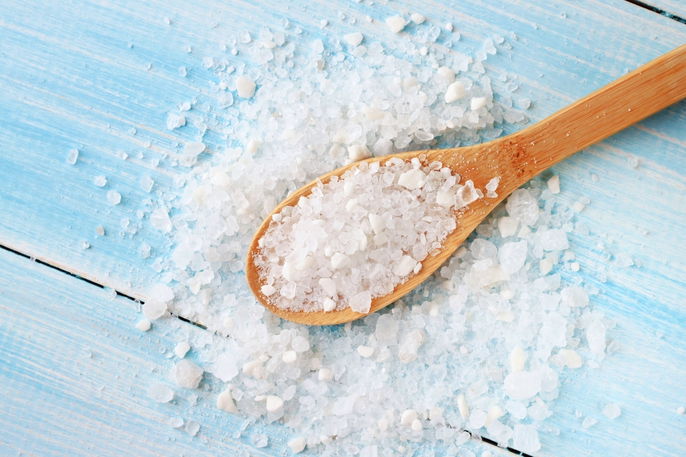Sea salt is obtained through the natural evaporation of sea water or salt lake water. It is rich in sodium, a mineral that balances the quantity and distribution of fluid in the body, and can therefore be consumed to regulate blood pressure.
Sea salt also contains calcium and magnesium, minerals that give this salt its flavor and color. However, sea salt is as high in sodium as table salt and pink Himalayan salt, and should therefore be consumed in moderation.
Sea salt can be found in grocery stores or health food stores in the form of fine grains or flakes. It may or may not be fortified with iodine and which vary in color from white, pink, black or gray. .

Health benefits
The main health benefits of moderate sea salt consumption are regulating blood pressure and facilitating the absorption of nutrients. This is because this salt is rich in sodium, a mineral that regulates the amount and distribution of fluid in the body. It also plays a role in the absorption of nutrients into cells.
Sea salt can also be enriched with iodine, a mineral that is essential for the formation of thyroid hormones. This type of sea salt can also play a role in regulating thyroid function, and help to prevent the emergence of conditions such as hyperthyroidism and goiter.
Also recommended: 8 Thyroid Symptoms You Should Tell Your Doctor tuasaude.com/en/symptoms-of-thyroid-problemsSea salt vs. table salt
Table salt goes through a refining and bleaching process leading to many minerals being removed from it.. This type of salt also contains anti-humectants, a chemical additive that prevents the formation of moisture. This helps to leave food with a drier and looser texture.
Sea salt contains the same amount of sodium as refined salt. However, this type of salt does not go through the refinement process, and therefore contains slightly more minerals than refined salt. Furthermore, seal salt has no additives and its texture varies between flakes, thick or fine grains.
Nutritional information
The following table contains nutritional information for 10g, which is equivalent to 2 teaspoons, of sea salt and refined salt:
It is important to remember that sea salt contains the same amount of sodium as other types of salt, and should therefore be consumed in moderation.
Recommended amount
The World Health Organization recommends a maximum intake of 5g of salt per day, which corresponds to approximately 1 teaspoon of sea salt per day.
This is because excessive salt consumption can cause high blood pressure, which can increase your risk for serious health conditions, like a heart attack or a stroke.
Also recommended: High Blood Pressure Diet: What to Eat & Avoid (& Meal Plan) tuasaude.com/en/high-blood-pressure-dietHow to consume
Sea salt can be used to season dishes like salads, meats, breads, soups, pastas, stews and sauces.
Sea salt can also be used to prepare home remedies such as throat gargles and nasal irrigations. Learn more about how to prepare salt water gargles, which can be made with sea salt.






























